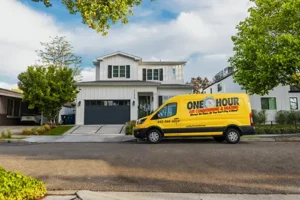Mini-Split AC System: Pros and Cons
As a homeowner, I’ve been seriously curious about these mini-split systems that seem to be all the rage lately. I mean, the concept just sounds so darn appealing—efficient heating and cooling without all the ductwork. But before I go ahead and make the leap, I figured I really ought to dig into the pros and cons and see if it’s the right fit for my place.
What Are These Mini-Split Thingies Anyway?
Let me start by breaking down exactly what a mini-split system is. It’s made up of an outdoor compressor unit and one or more indoor air-handling units. The key difference from a traditional HVAC setup is that mini-splits don’t require any of that ductwork business. Each indoor unit is designed to heat or cool a specific room or zone in your home.
Now, these systems are sometimes called “ductless air conditioners,” but that’s a bit misleading. They can provide both cooling and heating, so you’re covered year-round. All it takes is a simple switch of a button.
What caught my attention is the flexibility these things offer. Unlike a central HVAC system that controls the temp for your whole house, mini-splits let you customize the climate in different rooms. So if I’ve got a home office that needs to be a bit cooler than the rest of the place, or a bedroom that’s gotta be a little toastier, I can make that happen.
Pros and Cons of Efficiency and Savings? Yes, Please!
Okay, let’s talk about the big draw for a lot of homeowners – energy efficiency. I’ve heard traditional HVAC systems can lose up to 30% of their energy through all that ductwork. But with mini-splits, that energy loss is eliminated. That’s a major plus in my book.
And get this, a lot of these mini-split models come loaded with fancy inverter technology. It allows the system to adjust its power output to maintain a consistent temp, rather than constantly cycling on and off. Translation? Lower energy usage and lower utility bills. Sounds pretty sweet, right?
In fact, many mini-splits are even ENERGY STAR certified, so I know I’d be getting a system that meets the highest standards for efficiency. Some states and local utilities offer rebates or incentives for installing eco-friendly setups like these, which could help offset the initial cost.
Now, I will say the upfront price tag for a mini-split can be a bit steeper than a traditional HVAC system. But when I consider the long-term savings on my energy bills, it seems like a worthwhile investment. Have you got to weigh all the factors, you know?
A Breeze to Install and Maintain
Another thing I dig about mini-splits is how flexible and easy they are to install. Since there’s no need for ductwork, they’re a great option for homes where adding all that would be a real headache. Heck, you can even put them in older homes without having to mess with the structure or vibe of the place.
The indoor units come in all sorts of styles and can be mounted on the wall, floor, or ceiling. So I’m confident I could find an option that fits my home’s design aesthetic. Based on what I’ve read, the installation process itself is typically faster and less disruptive than a traditional HVAC setup. Apparently, the pros can often get the job done in just one day. Sign me up!
As for maintenance, mini-splits seem pretty low-key. Regularly cleaning the filters and checking the outdoor unit is usually all it takes. And with the right upkeep, these systems are known to have some serious staying power – we’re talking 15 to 20 years, which is right up there with traditional units. Can’t argue with that kind of longevity.
Temperature Control and Comfort, Dialed In
The ability to dial in the perfect temperature in different rooms is probably my favorite aspect of mini-split systems. I mean, how great would it be to keep my bedroom nice and chilly at night for better sleep, while the living room stays toasty? Or to have a home office that’s a few degrees cooler than the rest of the house? Sign me up!
And the quiet operation of these things is such a bonus. I can’t stand that constant humming and clanking of traditional HVAC units. Mini-splits are designed to run super quietly, creating a much more peaceful vibe – especially in sensitive spaces like bedrooms and home offices.
Pros and Cons of Aesthetics and Air Quality
Looks are important too, and I’ve gotta say, mini-split systems offer some pretty sleek and versatile design options. The indoor units come in all sorts of styles and colors, so I’m confident I could find an option that seamlessly blends with my home’s decor.
Plus, a lot of these mini-split setups feature advanced filtration that can help improve indoor air quality. We’re talking capture of dust, allergens, and other yucky particles – crucial for households with allergy sufferers or asthma.
Just gotta make sure I select a model with those enhanced air purification features if that’s a priority for me. Not all mini-splits come equipped with the same level of filtration.
Eco-Friendly Bonus
As an eco-conscious homeowner, the environmental impact of my home systems is a big consideration. And mini-splits seem to be a pretty green option, what with eliminating energy-wasting ductwork and often using refrigerants with lower global warming potential.
Pair one of these mini-split setups with some renewable energy sources like solar panels, and I’d be well on my way to creating a seriously sustainable home. Gotta love a win-win for both the planet and my wallet!
The Verdict? Mini-Split Might Be the Way to Go
After weighing all the pros and cons, I have to say that mini-split systems are seriously intriguing. The flexibility, efficiency, and personalized comfort they offer are super appealing. And while the initial cost is a bit of a hurdle, the long-term savings and positive environmental impact make a pretty compelling case.
Of course, my own specific needs and budget will be the ultimate deciding factors. But I’m going to do some more research the pros and cons, chat with a professional HVAC technician, and consider how a mini-split system could level up my home experience. Who knows, it just might be the perfect fit!
